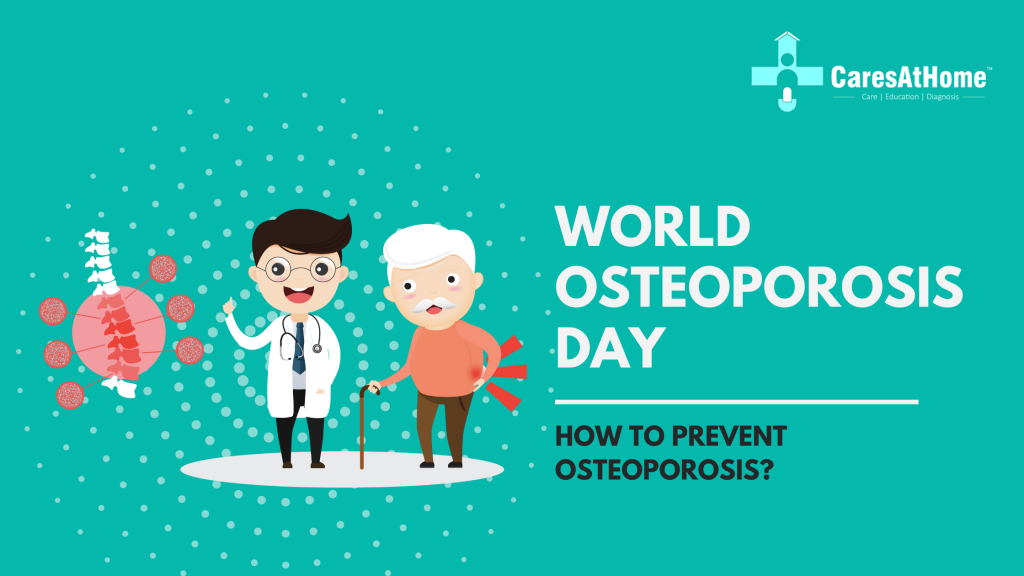Osteoporosis is a condition where bones become weak and brittle, increasing the risk of fractures, particularly in the hip, spine, and wrist. While it is more common in older adults, especially postmenopausal women, it’s important to start taking preventive measures early in life to maintain bone density and strength.
Here are some key strategies to help prevent osteoporosis:
1. Get Enough Calcium
Calcium is essential for building and maintaining strong bones. A lack of calcium over time can contribute to the development of osteoporosis.
- Daily Calcium Intake Recommendations:
- Adults aged 19-50: 1,000 mg/day
- Women over 50 and men over 70: 1,200 mg/day
- Calcium-Rich Foods:
- Dairy products (milk, cheese, yogurt)
- Leafy green vegetables (kale, broccoli)
- Almonds
- Fortified foods (such as calcium-fortified orange juice or cereals)
- Sardines and salmon with bones
If you have difficulty meeting your calcium needs through food, your doctor may recommend calcium supplements.
2. Ensure Adequate Vitamin D
Vitamin D helps your body absorb calcium and is crucial for bone health. Without enough vitamin D, your body cannot effectively absorb calcium, leading to bone loss.
- Daily Vitamin D Intake Recommendations:
- Adults aged 19-70: 600 IU/day
- Adults over 70: 800 IU/day
- Vitamin D Sources:
- Sunlight: Spending 10-30 minutes in sunlight several times a week can help your body produce vitamin D.
- Foods: Fatty fish (like salmon and mackerel), fortified milk, and egg yolks.
- Supplements: If your vitamin D levels are low, your doctor may recommend a supplement.
3. Engage in Weight-Bearing and Muscle-Strengthening Exercises
Physical activity is one of the most effective ways to strengthen bones and reduce the risk of osteoporosis. Focus on exercises that build and maintain bone density.
- Weight-Bearing Exercises:
- Walking, jogging, or running
- Dancing
- Hiking
- Jumping rope
- Stair climbing
- Tennis
- Muscle-Strengthening Exercises:
- Weightlifting
- Resistance band exercises
- Bodyweight exercises (such as squats, lunges, or push-ups)
- Pilates and yoga
These activities stimulate bone growth and maintain muscle mass, which is essential for supporting bone health.
4. Avoid Smoking and Limit Alcohol Consumption
- Quit Smoking: Smoking reduces blood supply to the bones and interferes with calcium absorption, leading to decreased bone density.
- Limit Alcohol Intake: Excessive alcohol consumption can interfere with the body’s ability to absorb calcium, increasing the risk of osteoporosis. Limit alcohol to no more than one drink per day for women and two for men.
5. Maintain a Healthy Body Weight
Both being underweight and overweight can increase the risk of osteoporosis.
- Underweight: People with very low body weight are more prone to bone loss and fractures. This is particularly true for women with low body fat, as it can result in reduced estrogen levels, which is critical for bone health.
- Overweight: Obesity can place added stress on the bones, particularly in the hips and knees, and increase the risk of fractures.
Maintaining a healthy weight through a balanced diet and regular exercise is key to supporting bone health.
6. Reduce Soda and Caffeine Intake
Excessive consumption of carbonated beverages, particularly those containing caffeine and phosphates, may contribute to bone loss by interfering with calcium absorption.
- Caffeine: Limit caffeine intake to no more than 2-3 cups of coffee per day.
- Soda: Try to reduce your consumption of carbonated soft drinks, especially colas, as they often contain phosphoric acid, which may have a negative effect on bone health.
7. Hormone Balance
For women, hormonal changes, particularly during menopause, can lead to a significant decrease in bone density due to reduced estrogen levels. Men may experience a decrease in testosterone, which can also impact bone strength.
- Hormone Replacement Therapy (HRT): In some cases, HRT may be recommended for postmenopausal women to help prevent osteoporosis. However, it’s important to discuss the risks and benefits with a healthcare provider.
- Natural Hormone Support: For both men and women, maintaining a healthy lifestyle with regular exercise, a nutrient-rich diet, and stress management can help support balanced hormone levels.
8. Bone Density Testing
Bone density tests (DEXA scans) measure bone mineral density and can help assess your risk of osteoporosis. Regular testing is particularly important for:
- Women over the age of 65
- Postmenopausal women under 65 with risk factors (such as family history or early menopause)
- Men over the age of 70
- Individuals with a history of fractures or certain medical conditions
Early detection through bone density testing allows for preventive measures to be taken before significant bone loss occurs.
9. Monitor Medications
Certain medications can contribute to bone loss, including long-term use of:
- Corticosteroids (e.g., prednisone)
- Some anticonvulsants
- Certain antidepressants
- Proton pump inhibitors (PPIs) for acid reflux
If you’re taking medications that may affect your bone health, speak with your doctor about ways to mitigate the impact or explore alternative treatments.
10. Get Regular Health Checkups
Routine checkups with your healthcare provider are essential for monitoring your overall health and identifying any risk factors for osteoporosis. This includes:
- Monitoring calcium and vitamin D levels
- Evaluating your lifestyle and exercise habits
- Checking for underlying conditions that may contribute to bone loss
Conclusion
Preventing osteoporosis starts with making healthy lifestyle choices early on. By maintaining a nutrient-rich diet, staying physically active, avoiding harmful habits, and monitoring your bone health, you can significantly reduce your risk of osteoporosis and keep your bones strong as you age. Remember, it’s never too late to start making positive changes to protect your bone health.

